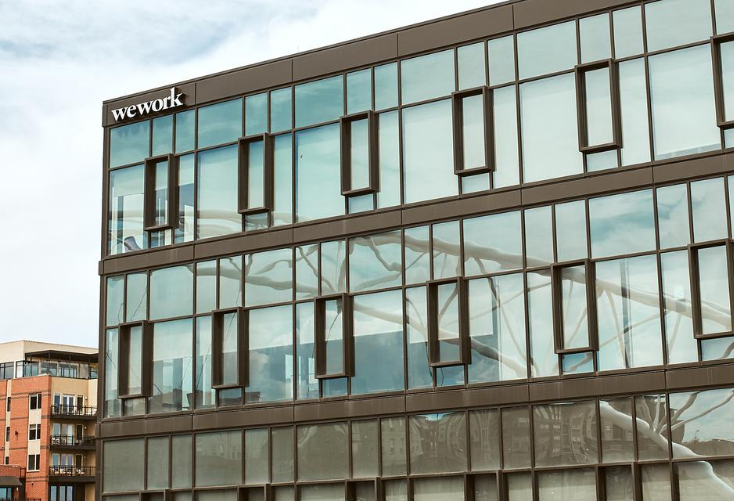Hand selected flexible workspace news from the most reliable sources to keep you ahead of the pack. We find all the latest news, so you don’t have to. Morning and afternoon updates. Stay in the know.
Here’s what you need to know today:
- Google Sets New Benchmark For Remote Working Policies NEW
- Addressing Cybersecurity Threats For Remote Workforces NEW
- Remote Workers Struggle To Switch Off NEW
- WeWork Pivots To Large Enterprise Tenants
- Creating Balance Between Remote And Office Arrangements
- Knotel Is Riddled In Lawsuits
Google Sets New Benchmark For Remote Working Policies
Earlier this week, Google told its employees that it would be extending its voluntary work from home policy through to June 30, 2021, which will likely be the beginning of major changes to sweep through other large companies.
“The first thing that will go through every [Silicon Valley] executive’s and human resources teams’ minds is: When do we introduce a policy that matches or beats it?” said Arran Stewart, co-founder of Job.com.
Stewart added that Google has set a new bar for other major technology companies, particularly in the competition for attracting and retaining top talent.
However, companies like Twitter and Facebook have already exceeded the benchmark after announcing that many of its employees will have the option to work from home indefinitely.
This pivot indicates that working from home will become a more widely adopted arrangement for companies large and small moving forward, especially those with a lot of knowledge workers.
As a result, the commercial real estate industry could take a huge hit during this transition. Companies as big as Google may soon realize that having an office space is not a necessity at all.
“This is devastating news for them,” said Mauro Guillén, a management professor at The Wharton School of the University of Pennsylvania. “Google employees aren’t going to be going to the hot dog place around the corner, shopping or taking public transportation. That is really bad for those neighborhoods and areas where Googlers would commute.”

Addressing Cybersecurity Threats For Remote Workforces
Millions of companies have recently transitioned to remote working arrangements, and with that comes cybersecurity challenges for IT teams.
Remote working undoubtedly has provided numerous benefits for both employees and employers, but in order to fully adopt this policy, organizations need to ensure their security efforts are strong.
Many companies have relied on VPNs for employees who are using enterprise networks at home, but this only offers a short-term solution. Instead, businesses need to focus on a more durable approach. For instance, IT teams can create security infrastructures to better support workers’ devices and ensure they are safe to use no matter where they are working from.
Using mobile device management (MDM) solutions is one way to maintain security as they allow IT teams to remotely monitor devices and update their software as necessary.
MDM solutions can also help by alerting IT teams when there is any sort of change or threat to the device that needs to be addressed. With cybersecurity attacks on the uprise since March, it is necessary for companies to have these tools in place.
Moving forward, IT leaders need to make sure their emergency plans are updated to resolve new risks and issues that employees may face as they transition to working remotely. Making sure that these new protocols are communicated to both the IT team and workers will be vital in keeping everyone in making long-term remote working more seamless.

Remote Workers Struggle To Switch Off
The pivot to remote working was initially met with great optimism at first, but now many workers are suffering from a lack of work-life balance.
“Work-life blur” has quickly become a major challenge for remote workers as they attempt to find solace in eating, sleeping and working within the same space everyday.
Although remote working has provided countless benefits, such as allowing workers to create their own schedules, not establishing work hours can hurt them. This makes it hard for employees to switch off at the end of the day, or be riddled with feelings of guilt if they finish all their tasks early.
To avoid work-life blur, both employers and employees need to take responsibility in how the work day runs. This means that managers need to set reasonable deadlines for tasks, as well as avoid contacting employees outside of their established office hours.
Employees should also clearly communicate their work hours and establish strict boundaries with their employer. One way to properly accomplish this is to use separate devices for work and person use.
Another way to create a distinction between work and home life is creating a physical home office that is dedicated to just working.
“We need to be mindful that everyone is different, and each employee has different demands. Some thrive in an isolated environment, and others hate it,” said Melissa Broxton of Worksnug.com. “Flexibility of work and life is going to be important moving forward.”

WeWork Pivots To Large Enterprise Tenants
Over the past few years, WeWork has focused its efforts on large enterprise tenants rather than freelancers and startups it started off with.
Now, companies with over 500 employees accounted for more than half of the company’s revenue in the second quarter.
“If you want to continue to grow faster, the additional demand comes from enterprise businesses,” said Sandeep Mathrani, WeWork CEO.
Since the start of the ongoing pandemic, smaller companies have been deserting their coworking space, making it necessary for operators like WeWork to court large tenants.
According to accounting firm Kruze Consulting, half of its venture-funded customers that were WeWork members abandoned their space between December 2019 and June of this year, while over a quarter have decreased their space takeup.
Despite the company saying it’s on track to become profitable by the end of next year, the pandemic has caused WeWork to take a massive financial hit.

Creating Balance Between Remote And Office Arrangements
A new JLL survey of over 3,000 employees of multinational companies worldwide has revealed that 71% have worked from home throughout the pandemic. The research also found that 58% missed the office and 44% missed socializing with their coworkers.
According to Marie Puybaraud, Global Head of Corporate Solutions Research for JLL, such the shift to a more remote workplace has been anticipated for at least a decade now, but the pandemic has accelerated this trend faster than expected.
The survey also found that respondents were more productive at home. The views about the advantages of working from home varied depending on where the worker was from. For instance, in the Americas employees enjoyed not having daily commutes, in EMEA they liked having outdoor space and in Asia, they valued having a better work-life balance.
Still, offices will continue to play an essential role in how a company operates according to JLL, but not without necessary transformations.
First, companies should look into adopting a hybrid model that includes the ability to work at home, in a coworking space and in the office.
Additionally, making the employee experience a top priority when returning to the workplace will be essential. Having a broader purpose that puts the needs of workers first can help nurture a healthy company culture, while keeping workers engaged and satisfied.
Accepting that remote working is not going anywhere will also be vital for companies moving forward. Business leaders and employees alike now know the advantages of these work arrangements, and it is valuable to maintain it in some way to reap those benefits.

Knotel Is Riddled In Lawsuits
Since early July, serviced office provider Knotel has been sued by four different landlords for a total of $1.6 million in unpaid rent.
According to a spokesperson for the company, it is “always evaluating and adjusting our portfolio to best meet the needs of our customers, through Covid-19 and beyond, and we have reached positive resolutions with many owners. We take our landlord relationships very seriously, and will continue to actively engage with them to achieve good outcomes during these challenging times.”
Some of the claims include GFP Real Estate 40 Exchange Place in Lower Manhattan, where the landlord claims Knotel owes over $740,000 and has not paid rent since April. Investor David Berley’s UNG Realty failed a lawsuit, stating that Knotel owed about $197,000 at 580 Eighth Avenue.
Recent reports revealed that Knotel has been looking to return 20% of its portfolio to landlords following two large rounds of layoffs.



 Dr. Gleb Tsipursky – The Office Whisperer
Dr. Gleb Tsipursky – The Office Whisperer Nirit Cohen – WorkFutures
Nirit Cohen – WorkFutures Angela Howard – Culture Expert
Angela Howard – Culture Expert Drew Jones – Design & Innovation
Drew Jones – Design & Innovation Jonathan Price – CRE & Flex Expert
Jonathan Price – CRE & Flex Expert














